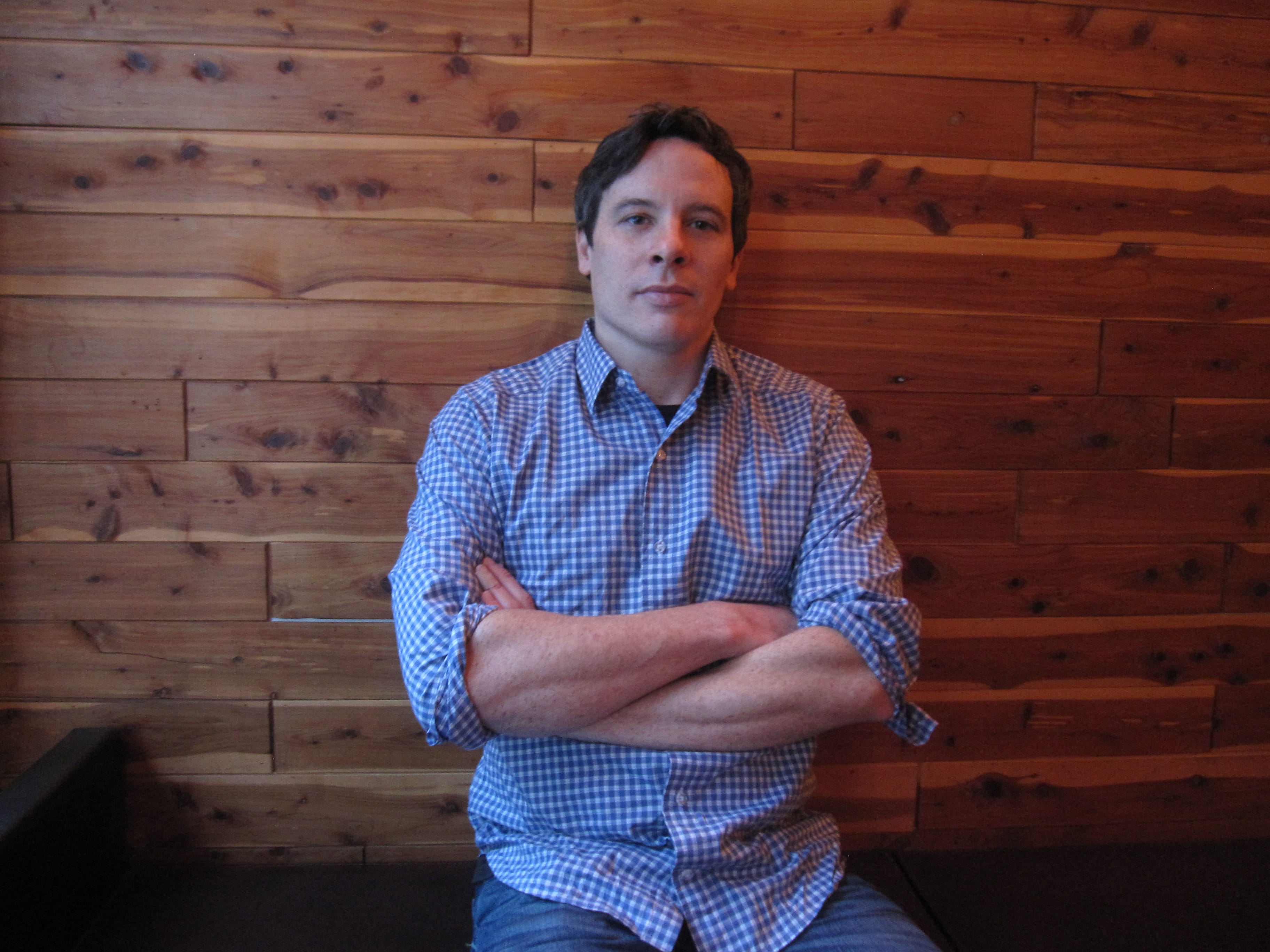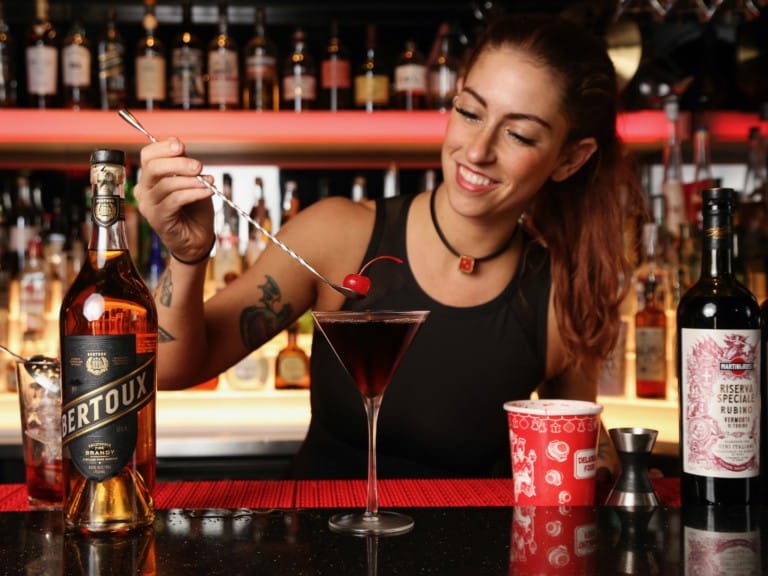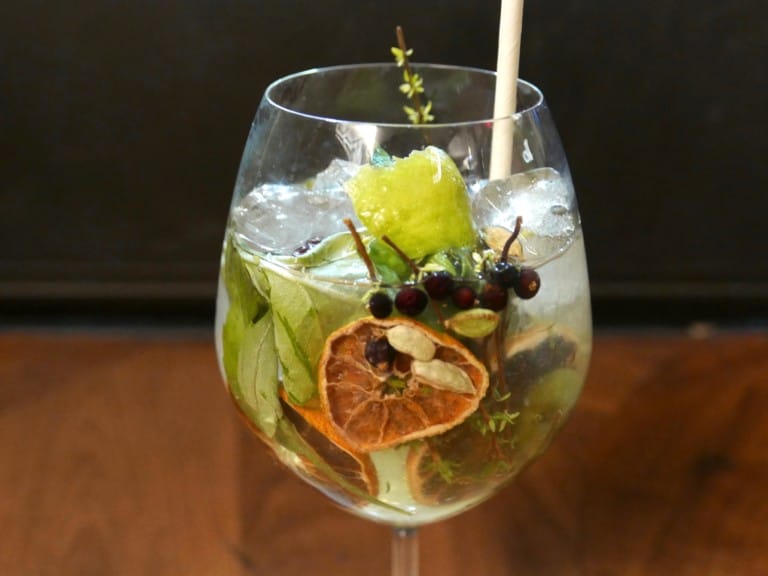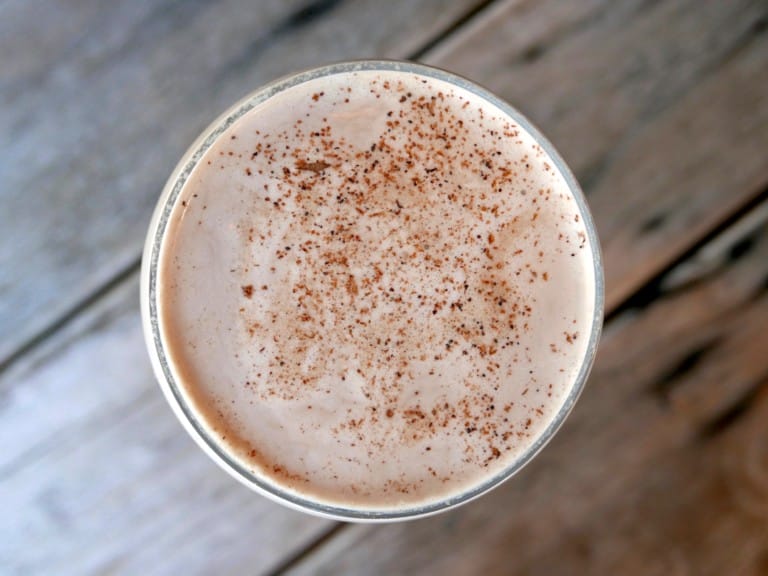INTERVIEW CONTINUED FROM PREVIOUS PAGE
Who are some other bartenders that you really admire, and how come?
I admire my bartenders here. I don’t look at them as my employees, good and bad. I see them as my peers, and also mentors. Because I’m running the place, doing all the operational stuff, I’m not behind the bar as much as I’d like. These guys – like Nick [Jarrett], he works at Flatiron, he works at Clover Club, he was working at Franklin Mortgage. He worked 60-something days in a row. He’s constantly behind the bar, moving, and he works at Flatiron, which is huge volume. He is a better bartender than I am, and most of my bartenders are. When I’m here seeing them work.
In this city, I’m a big fan of Alex Day. When he started at Death & Co. doing one or two shifts a week, I would go in there. He started on the Sunday shift, and there was something about him that, even though he was still kind of learning, I just believe that if there’s such a thing as innate talent – and I believe that it’s all learned, if you decide to geek out on it, how to work behind the bar – separate from the cocktail stuff, dealing with guests, just learning how to move behind the bar, how to pace yourself, how to multi-task, everything else is just geeking out on it. You get obsessed and you learn about it. When I was saw Alex, there was something about him; he’s just really, really good. He learned very, very quickly, and he knows a lot about beer and wine, which is also something I wanted to incorporate here. I did not want it to be just cocktails. I wanted to geek out on beer and wine as well.
I found that spending a lot of time at cocktail bars, the way that we would talk about spirits and cocktails is the same way; we had the same conversations that beer guys and wine people and coffee people were having, in terms of, you really care about a certain technique, a certain presentation, certain ingredients, that the rest of the consumers may not care about as much. You have to deal with volume, and I was like, wow, we’re having the same conversation in a cocktail bar. “Why does everybody just want a vodka and soda? Don’t they know that we make our own syrups? We have these really hard to source liqueurs and brandies and we want to work with those.” Why do people love the same thing? Why does everybody like a really big California red? Why don’t they want to stray off the beaten track? And beer people are like, “Why does everybody want an IPA?” We should talk to each other, but whenever any of my beer geek friends would come to a cocktail bar, it was a vodka soda, but if you go into their bar and get a canned beer, they’ll laugh you out of the bar. It’s sort of the same thing. I kind of wanted to have a geeky wine list and a geeky beer list, but also accessible, so that those people who are really into beer and wine will start to ask questions about the cocktails and spirits, and vice versa. If you’re just used to drinking cocktails, then you’re like, “I’ve never heard of any of these beers. What’s the story behind those?” To have that kind of cross pollination is another thing I wanted to do.
And going back to Alex, Alex had a strong foundation in wine and beer and a broad curiosity, and I feel like he brought that when he created drinks. He was very good at creating drinks and he was very good behind the bar, very into technique, and he’s just a sweet, sweet guy with presence behind the bar. So I’m a big fan of Alex Day.
It seems like you have bartenders working a lot of single shifts. Why is it important for you?
Because I get bored. I would get bored at a place where it’s the same menu all the time, the same dress code, the same playlist, the same mise en place, the same approach. You work within those house specs, that’s how you run a business successfully, I think, and you guarantee consistency. I think consistency is overrated. I like – we’re at the point now where most people who come to a bar like this, they may not be cocktail geeks, but they’ve seen big ice cubes before, they know how to ask for an Old Fashioned – that’s what’s good and bad right now. It’s a challenge, because people aren’t wowed anymore. Four years ago, you opened up a dark little bar with crazy ice and cool glassware, people were just amazed. You could have done anything. Your drinks could have been shit, but they’d be impressed by the show. Now people have all seen the show; let’s move on past that point. Okay, now make good drinks, and let’s have a bar that’s a little less stuffy, a little less formal. So my having my bartenders, the ones who work just a single shift, it’s because I let them use this as a platform for them. They could play their own music, their approach to drinks is completely different, that they may or may not be able to do at their own bar.
Now that you’re in charge operationally, what was the last cocktail you were able to develop?
I was working on one last night.
What’s the approach, and what’s the cocktail?
My approach – we have a very, very small menu. I wanted those drinks to be all very good, rather than having a 70-drink menu. It’s just too overwhelming. I wanted it to be small and to the point, representative of different styles, and I wanted changes as much as possible. So my approach is working within that. I kind of think of seasonal, not necessarily seasonal ingredients, in terms of it’s summer and I’m going to get a bunch of berries in it. I’m very spirit-forward with my drinks. That’s how I like them. But I feel like in the winter, there are going to be certain spices, and dark spirits, you’re going to gravitate towards. You get to do more boozy drinks, so I’m thinking what people are in the mood for, in whatever season it is. I don’t geek out as much as I want to, in terms of applying different molecular stuff, which I’m kind of curious about, but I don’t really do that. I just want it to be good, root it in a classic, but subvert it just a little bit.
What was the cocktail that you were coming up with last night?
I came up with one that was bourbon, stirred, which is actually pretty hard. Most of the classic cocktails, when it comes to whiskey, tend to be rye, and it’s amontillado sherry, with a little bit of pear eau de vie, and a little bit of cinnamon.
Do you feel like you locked it down?
I liked it. I’m going to play with it for another week before I put it on the menu. All the bartenders get to work on something and they put it on the menu as well.
What’s a great simple cocktail recipe for people to make at home?
When it comes to being at home, you can – actually, most of the classics have three or four ingredients, so if you were to start at home, I would start with a Manhattan because there are three ingredients, they’re available no matter where you live in the country. You just need a mixing glass, a strainer and a spoon and you’re good to go. And all the ingredients are pretty shelf stable.
What’s the key to a great Manhattan?
If you’re at home? Keep your ice in those Tovolo ice trays. They’re like one-inch, one and a quarter inch diameter, size. Then put them in freezer bags after they’re frozen. Don’t let the ice sit in your freezer. Crack the ice and have good vermouth. That’s key, and a good rye, and Angostura bitters. Just stir it for 30 seconds and serve in a chilled glass. That’s as good a Manhattan as you’re going to have anywhere.
When you’re not here, where do you like to drink, and what do you like to drink?
I tend to not drink cocktails much anymore, unless I’m going to – say Clover Club launches their new menu – I’ll go over there and check it out. A weekly thing, I drink beer.
Where do you do it?
I don’t really get out much any more. I like to drink at the bar at Rye restaurant. I like Spuyten Duyvil, which is a beer bar. I like my local dive bar, the R Bar, often enough, and I’m not there for culinary reasons. I like to wind down and have a beer.
If you could only fill your glass with one more cocktail, what would be in the glass?
A Sazerac.
How come?
It’s very simple. It’s very elegant. I just love it. It’s got the aromatic. You can sit with it for awhile. It evolves. It’s got a great history, and I just think it’s delicious. Still my favorite cocktail.









Blog Comments
Tweets that mention Food GPS » Q&A with bartender Tom Chadwick (Dram) -- Topsy.com
January 22, 2011 at 1:13 AM
[…] This post was mentioned on Twitter by foodgps, Magnus Sundström. Magnus Sundström said: Q&A with bartender Tom Chadwick (Dram, Williamsburg) http://fb.me/RdihouJT […]